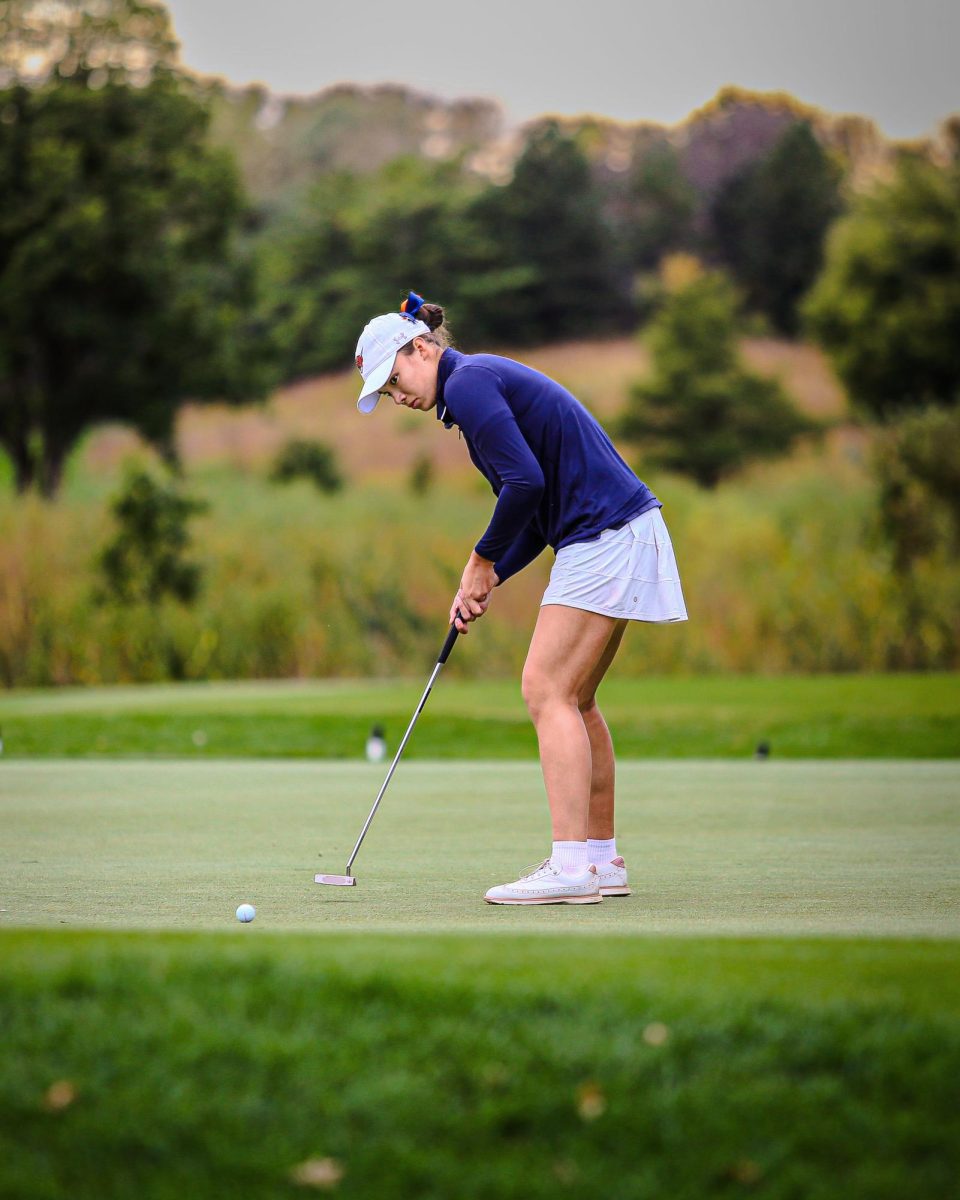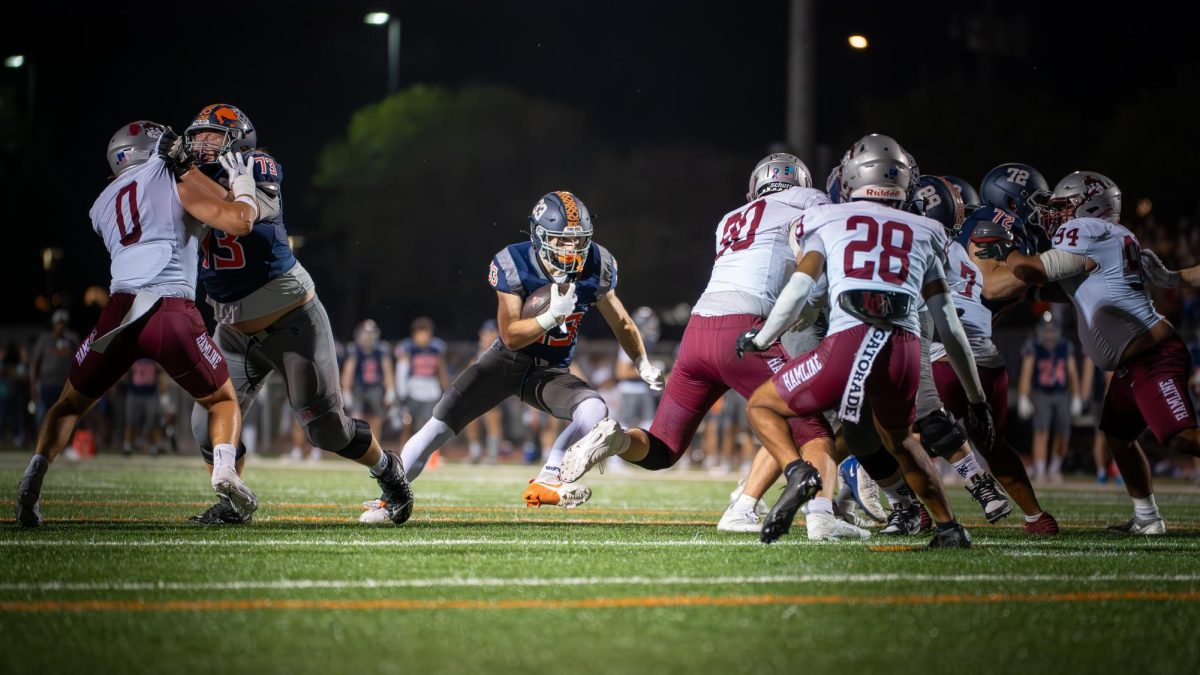At the college level, first-year coaches all face the same conundrum: how do they get athletes that they didn’t recruit, who have been at the school longer than they have, to buy into their vision? The answer, almost universally, lies in the relationships formed between the incoming coaching staff and the players. The earliest encounters, the first few conversations and the energy sensed by the players when they first meet their new coach have the potential to set the tone for either a smooth transition or a rocky one.
Luckily for first-year Track and Field Head Coach Margaret Gehring, people and energy are two of her many strong suits. Beloved by her players and possessed by a tangible strength of purpose, she is an ideal leader for Macalester Track and Field.
Coach Gehring has been around track and field for most of her adult life, and had successful stints as a head coach at both Ohio Wesleyan University and the College of Saint Benedict. She has served on several executive boards governing collegiate track competitions, holds advanced degrees in various sports-related disciplines from Smith College, University of Buffalo and Ohio State University and is a published researcher in the field of exercise science.
Despite her expertise, however, she found herself a bit rusty this winter after a 15-year hiatus from head coaching. “About halfway through our first indoor meet, I had to stop, and thought to myself, oh no, I forgot how to coach,” she said. “Luckily, by the second meet I was back on my A-game, but there was certainly some rustiness concerning the organizational aspects of coaching.”
Perhaps even more important than the strategic work Gehring does with her team, however, has been her reshaping and redefining of the culture surrounding her program. Her expectations, which she calls the “four C’s,” have become a staple of the team this year. She believes that it is imperative that their team communicate, that every member be fully committed, that the many different parts of the team cooperate, and that everybody contribute every day in one way or another.
She was also very clear from the beginning with her players about what their program would be about, paying particular attention to defining success. “If you just look at how we finished as a team in the indoor MIAC Championships, we look like a bottom tier program and, performance-wise, we are,” she said. “I don’t shy away from that, but I don’t dwell on it. When I look at how we did throughout the year, we were much more competitive.”
Gehring has stressed to her team the celebration of individual achievements, and often cites examples of which she is especially proud. “There has not been one weekend this season where I have not had to go back into our top-ten list for at least one event and add a new score,” she said. “That is success. We broke two indoor school records this year. That, to me, is success.”
In addition to encouraging the celebration of in-season achievements, Gehring has tried to instill in her team a love for the history of Macalester Track and Field as strong and deep as her own. “Most people don’t realize our long, rich history in Track and Field,” she said.
Her office is like a shrine to Scot history, with old newspaper clippings and even older record sheets tacked to the wall right beside her desk, where she can easily access them. On the shelf above her desk lay three championship trophies, each won by Macalester Track and Field teams during the early 1900s that she eagerly points to and marvels at whenever the subject comes up.
Without any prodding, she leaps into a retelling of the program’s storied and largely forgotten history, which features 21 MIAC Championship titles, including 11 straight won from 1959-1969. Since she became Head Coach, Gehring has reached out to the members of those championship teams. Several of them will be present when Macalester hosts the MIAC Outdoor Track and Field Championships on May 8th. “You don’t ever want to lose that kind of history,” she said.
Gehring hopes that by being aware of their program’s rich history, her athletes will be able to learn from the successes of the past and replicate them. She knows and has made sure they all know as well, that it will not be easy. Her energy and confidence, however, have bled into her team, and going into the conference meet, she knows that her athletes are in their best mental and physical form of the year. The potential downfall of all first-year coaches, the dreaded culture-change, seems like a distant memory. In its place is a program built in the mold of its leader, who refuses to take the credit.
“Early on, I met with my captains every other week,” she said. “I really wanted them to understand my philosophy; I needed to tell them how I felt about us being a unified team and caring for one another, how I wanted us to hang onto our successes and get fired up about our history and the exciting year we had in store. Our amazing senior leadership and our culture did the rest. My first year has been a great year because of things that were well outside of my control. I just got lucky.”
Ask anyone who knows Coach Gehring and her team. Luck had nothing to do with it.







Grace McLean • Sep 11, 2019 at 3:15 pm
fantastic put up, very informative. I ponder why the opposite experts of this sector don’t realize this. You must continue your writing. I am confident, you’ve a great readers’ base already!
Eric Alsop • Sep 10, 2019 at 9:33 am
Itís an awesome article for all the internet visitors; they will get advantage from it I am sure.
Anthony Turner • Sep 6, 2019 at 12:00 pm
Perfect just what I was searching for! .